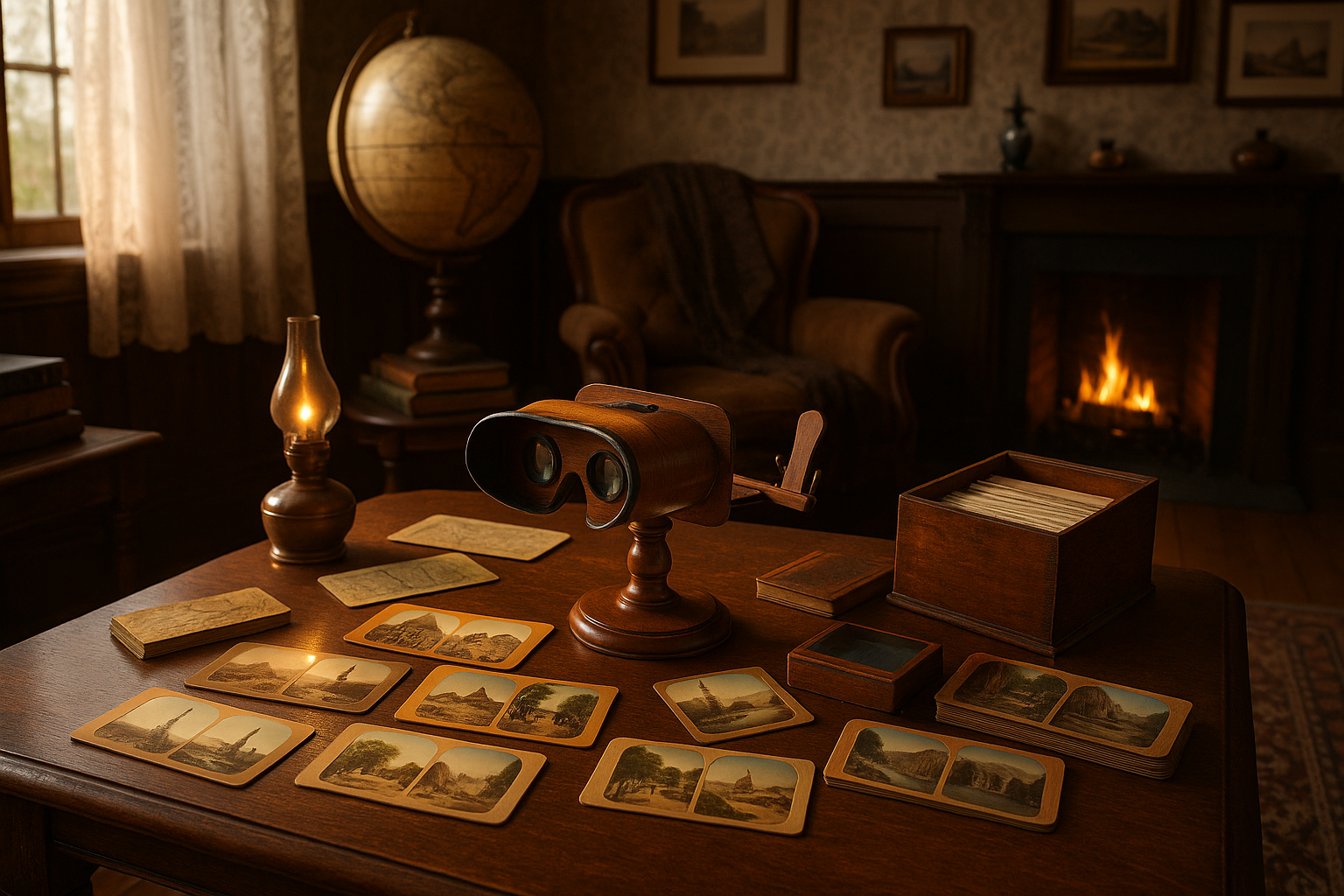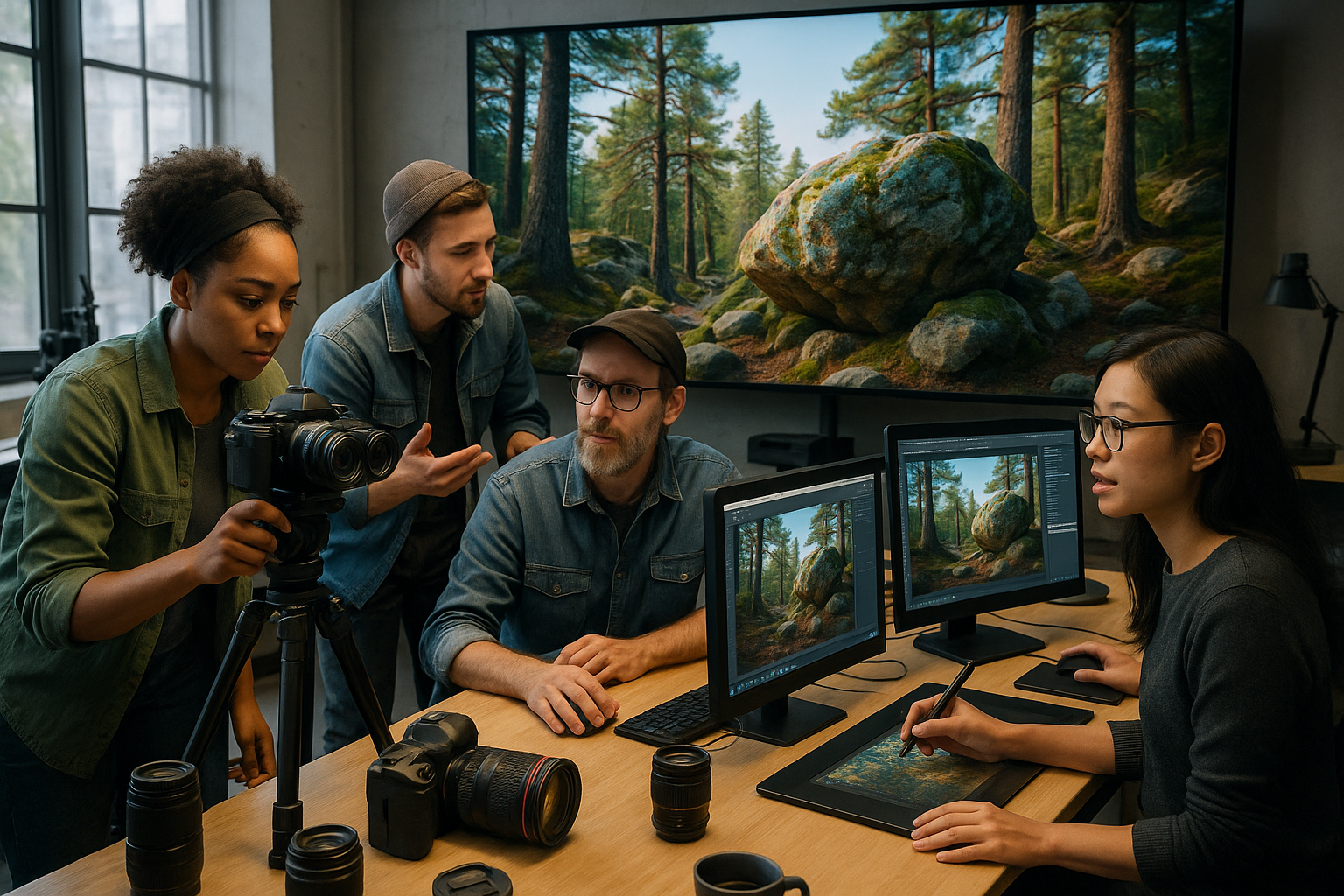In today’s digital landscape, where attention spans are fleeting and the quest for uniqueness is relentless, standing out online has never been more crucial. With social media platforms bustling with content, each more captivating than the last, how does one elevate their social status and captivate an audience? The answer lies in the dynamic world of 3D images. As we delve into the transformative power of 3D visuals, we’ll explore how they can not only enhance your online presence but also redefine how your audience interacts with your content. Prepare to unlock a new dimension of engagement and creativity that sets you apart in the crowded digital arena.
Imagine scrolling through your social media feed and suddenly encountering an image that seems to leap off the screen, inviting you into a world of depth and perspective. That’s the magic of 3D imagery. It’s not just a visual experience; it’s an invitation to explore, engage, and connect on a deeper level. In this article, we will journey through the fascinating realm of 3D visuals, uncovering the tools and techniques that make them accessible to everyone, from seasoned designers to enthusiastic beginners. Whether you’re a business looking to enhance your brand’s image or an influencer aiming to boost engagement, 3D images offer a unique avenue to enrich your storytelling and captivate your audience 🎨.
Throughout this exploration, we’ll discuss the practical steps to create compelling 3D images, the platforms that support their integration, and the psychological impact they have on viewers. From understanding the basics of 3D design to leveraging software that simplifies the creation process, you’ll gain insights into how to effectively incorporate these visuals into your digital strategy. We’ll also highlight real-world examples of individuals and brands that have successfully harnessed the power of 3D, providing inspiration and actionable tips to elevate your content. As we unravel the potential of 3D images, you’ll discover not only a tool for visual enhancement but a powerful means to elevate your online status and create an unforgettable digital footprint.
Understanding the Impact of 3D Images on Social Media
In the digital age, where social media platforms dominate the way we communicate and share experiences, standing out from the crowd is more crucial than ever. The rise of 3D images is reshaping the landscape of online content, offering a fresh and engaging way to captivate audiences. Unlike traditional 2D images, 3D visuals provide depth and dimension, creating an immersive experience that can elevate any social media profile. As users scroll through their feeds, a stunning 3D image can halt their swipes and make them linger a little longer, increasing the likelihood of interaction and engagement.
The appeal of 3D images lies in their ability to mimic the way we perceive the world. By incorporating depth, shadow, and a sense of perspective, these visuals can evoke a stronger emotional response than their flat counterparts. As a result, brands and individuals alike are leveraging this technology to enhance their online presence. Whether it’s a product showcase, an artistic creation, or a personal photo, adding a 3D effect can transform an ordinary post into something extraordinary.
Moreover, the integration of 3D images into social media strategies is not just a passing trend. It reflects a broader shift towards more interactive and engaging content. As platforms like Facebook and Instagram continue to support and promote 3D content, the potential for innovation in this space is vast. For those looking to elevate their online presence, understanding and utilizing 3D images can be a game-changer. Ready to see the impact in action? Check out the video below that demonstrates how brands are using 3D visuals effectively.
Watch this video: “3D Images in Social Media” by CreativeTech
Creating 3D Images: Tools and Techniques
Creating compelling 3D images might seem daunting at first, but with the right tools and techniques, anyone can become proficient in this art form. The first step is understanding the various software available, each offering unique features and capabilities. Popular choices include Blender, Adobe Dimension, and SketchUp, which cater to different skill levels and project requirements. Blender, for instance, is a free and open-source tool renowned for its robust features and active community support, making it an excellent starting point for beginners.
Once you’ve chosen your software, mastering the basics is crucial. This involves familiarizing yourself with 3D modeling, texturing, lighting, and rendering. Each component plays a vital role in the final outcome of your image. For instance, lighting can dramatically change the mood and focus of your visual, while textures add realism and detail. Experimenting with these elements allows for endless creative possibilities, enabling you to craft images that truly stand out.
Moreover, incorporating motion into your 3D images can further enhance their impact. Animated 3D graphics, such as GIFs or short video loops, are particularly effective on social media platforms, where they can capture attention and convey messages quickly. As you hone your skills, consider investing in more advanced tools or courses to expand your capabilities. Eager to explore these tools in more detail? Check out the table below for a quick comparison of popular 3D software options.
| Software | Features | Price | Skill Level |
|---|---|---|---|
| Blender | 3D modeling, animation, simulation | Free | Beginner to Advanced |
| Adobe Dimension | 3D design and rendering | Subscription-based | Intermediate |
| SketchUp | 3D modeling, easy to use | Free and Pro versions | Beginner to Intermediate |
Strategies for Using 3D Images to Enhance Your Brand
Utilizing 3D images effectively requires strategic planning and a deep understanding of your brand’s identity and goals. First, it’s essential to define how 3D images align with your brand’s message and target audience. Consider whether your brand is focused on innovation, luxury, or creativity, and how 3D visuals can reinforce these values. For instance, a tech company might use 3D models to showcase product features, while an artist might leverage the medium to express their unique style.
Incorporating 3D images into your social media strategy should also involve regular analysis and adaptation. Monitoring engagement metrics, such as likes, shares, and comments, can provide valuable insights into what resonates with your audience. This data-driven approach enables you to refine your content strategy, ensuring that each post maximizes its impact. Additionally, collaborating with influencers or other brands can expand your reach and introduce your 3D content to new audiences.
Finally, staying updated on the latest trends and technologies in 3D imaging is crucial for maintaining a competitive edge. As the field evolves, new tools and techniques will emerge, offering fresh opportunities to innovate and captivate your audience. By continuously learning and experimenting, you can ensure that your brand remains at the forefront of digital content creation. Curious about the next steps? Here’s a list of actions to help you get started:
- Identify your brand’s unique voice and how 3D images can enhance it.
- Experiment with different styles and techniques to find what resonates with your audience.
- Analyze engagement metrics to refine your strategy.
- Stay informed about the latest trends and technologies in 3D imaging.
- Consider collaborations to expand your reach and influence.

Conclusion
In conclusion, the exploration of 3D images as a tool to level up your social status and enhance your online presence is not only timely but also pivotal in today’s digital landscape. As we have navigated through the article, several key points have emerged, underscoring the transformative power of 3D visuals in both personal and professional realms.
Firstly, we delved into the technological advancements that have made 3D images more accessible than ever before. This democratization of technology means that anyone, regardless of technical skill level, can integrate stunning 3D visuals into their digital strategy. Whether you’re a social media influencer, a business owner, or simply someone looking to enhance your personal brand, the tools and platforms available today allow for the creation of dynamic, engaging content that stands out in a crowded digital space. 🌟
We also discussed the psychological impact of 3D images. Humans are inherently drawn to immersive and realistic visuals. This attraction can be leveraged to increase engagement, foster deeper connections, and ultimately, elevate one’s social status. By using 3D images, you are not only capturing attention but also creating memorable experiences for your audience, which can lead to increased interaction and loyalty.
Moreover, the versatility of 3D images was highlighted as a crucial advantage. From product showcases to storytelling, the ability to present information in a visually compelling manner can enhance understanding and retention. Businesses, in particular, can benefit from using 3D images to illustrate product features, demonstrate value, and differentiate themselves from competitors.
Furthermore, the article emphasized the role of 3D images in fostering creativity and innovation. As creators, we are constantly seeking new ways to express ideas and engage audiences. 3D technology opens up a world of possibilities, allowing us to push the boundaries of traditional content and explore new dimensions of creativity. Whether through interactive 3D models or augmented reality experiences, the potential for innovation is limitless.
Importantly, the discussion included practical tips and resources for getting started with 3D images. From software recommendations to tutorials and communities, the path to mastering 3D visuals is well within reach. For those eager to dive deeper, there are numerous online resources and communities dedicated to 3D art and design, offering support and inspiration. By investing time and effort into learning these skills, you are equipping yourself with a valuable asset in the digital age.
In reinforcing the importance of this topic, it’s clear that 3D images are not just a trend, but a powerful tool for communication and engagement in the digital world. As we continue to move towards a more visually-oriented society, staying ahead of the curve with cutting-edge visuals is essential. Whether you’re aiming to grow your following, enhance your brand, or simply express your creativity, 3D images provide a unique and effective means of achieving your goals.
As we conclude, I encourage you to take the insights gained from this article and apply them to your own digital strategy. Experiment with 3D images, explore new platforms, and don’t be afraid to push creative boundaries. Share your experiences and creations with your network; not only can this spark further innovation, but it also contributes to a community of learning and growth.
Feel inspired to comment on your thoughts, share this article with others who might benefit, and start incorporating 3D images into your online presence today. By doing so, you’re not only enhancing your digital footprint but also contributing to the ever-evolving landscape of visual communication. 🚀
For further exploration and learning, here are a few resources to get you started:
1. Blender: A powerful and free open-source 3D creation suite.
2. Sketchfab: A platform to publish, share, and discover 3D, VR, and AR content.
3. Adobe Dimension: A software tool for creating photorealistic 3D images and mockups.
By embracing the potential of 3D images, you’re setting yourself on a path to not only level up your social status but also become a pioneer in the art of modern visual communication. Let’s embark on this creative journey and redefine the possibilities of what can be achieved in the digital space!
Toni Santos is a visual historian and artisan whose creative lens is captivated by the forgotten marvels of antique optical devices. Through his thoughtful storytelling, Toni revives the instruments that once transformed light into wonder—camera obscuras, magic lanterns, kaleidoscopes, and other ingenious tools that shaped our earliest visual imaginations.
His journey is rooted in a fascination with how humans have long sought to bend, reflect, and reveal the unseen. Whether tracing the mechanical poetry of 19th-century projectors or illustrating the tactile elegance of early lenses, Toni’s work invites us to see vision itself as an evolving art form.
Blending handcrafted design with historical inquiry, Toni brings to life the material soul of these devices—celebrating not just how they functioned, but what they meant. His creations and curated stories illuminate a world where science, illusion, and beauty were intricately linked through glass and brass.
As the curator of Vizovex, Toni shares detailed studies, reconstructed artifacts, and immersive content that help others rediscover the origins of visual technology and the magic of analog perception.
His work is a tribute to:
The craftsmanship behind early visual instruments
The wonder of seeing through the eyes of another century
The intersection of optics, art, and imagination
Whether you’re a collector, a designer, or someone drawn to the lost poetry of vision, Toni welcomes you into a world where light is a storyteller—one prism, one lens, one forgotten invention at a time.





